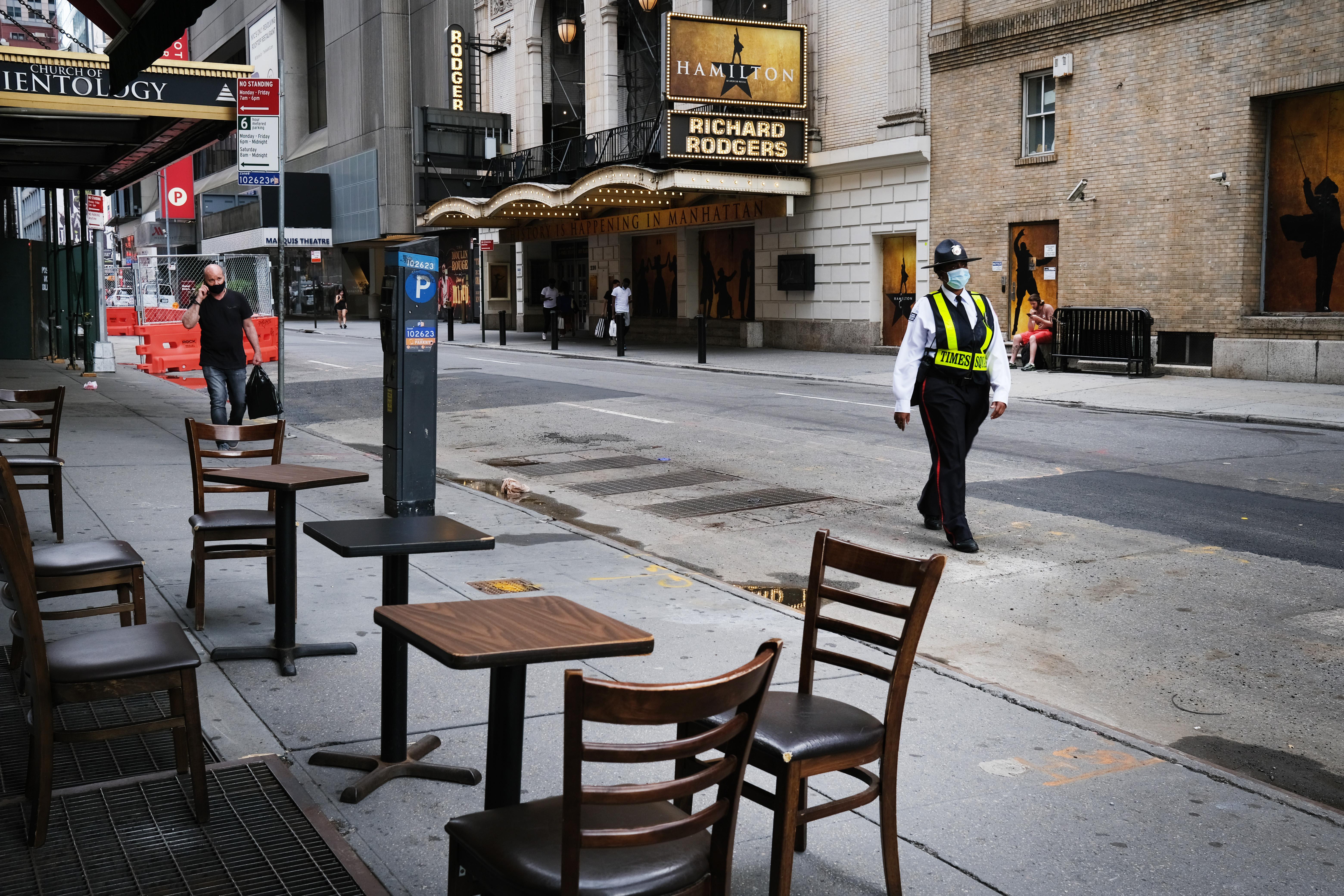In 1989, an Italian immigrant named Arturo Di Modica cast a bronze statue of a bull as a symbol of his optimism about America. He trucked it into Lower Manhattan from a Brooklyn foundry and left it on the street, illegally, where it become an icon of New York City’s financial might.
For five years, Sajid Mahmood has served chicken and rice from a cart in the Financial District, in the shadow of Charging Bull. When the Pakistani immigrant came back to work last week in Phase 2 of the city’s reopening, it was with a sense of hope for business downtown. On Tuesday evening, as he was wrapping up for the day, I wanted to know how things were going.
“Usually, I get about a thousand—but today it has been closer to 250,” he told me.
“Customers?” I asked.
“Dollars.”
After six terrible weeks as the epicenter of the coronavirus pandemic, New York is reopening again, in fits and starts. The city was not, as some observers irresponsibly claimed, a uniquely vulnerable edge case. Instead, it suffered an excruciating spasm of infection that is now recurring, on a smaller scale, in less dense, more suburban metropolises like Houston and Phoenix.
“Most cities are the same animal at a different scale,” Esteban Moro, a physicist who studies cities and measured New Yorkers’ interactions during the shutdown, told me. Bigger city, smaller city—it doesn’t make much of a difference, Moro says. You’ll meet about 5,000 people a year.
Which is what I thought about when COVID-19 cases started surging across the Sun Belt, in cities where politicians and pundits wrongly predicted that cars would protect them. Same animal, different scale. New York just had the bad luck to be the first place in the U.S. to really probe the depth of our leaders’ incompetence. Its problems are America’s problems now. Thanks to our government’s ongoing failure to manage the pandemic, much more than Manhattan seems to be in jeopardy.
Beginning this week on Slate’s future-focused Friday podcast What Next: TBD, I’m hosting a six-part series on the next stage of the American city. It’s an uncertain topic. The only thing that seems clear is this: Inadequate help for people, businesses, and local governments—combined with failures to stem the spread of COVID-19—will result in seismic changes to the places we love.
For the first episode, I started with those glassy totems looming over Mahmood’s halal cart: skyscrapers. Specifically, I wanted to explore some of the material challenges to reopening them while the coronavirus still rages—busy elevators, open plan offices, and mass transit.
I was expecting to hear about conference rooms strung with shower curtains and cubicles divided by plexiglass. Instead, I learned that few companies are trying to COVID-proof the office. As the CEO of Warby Parker put it recently, it’s better to be productive outside the office than to be sent back into a “maze.” If working from home works so well, some bosses are asking themselves, then what should the office really do? Already, many firms forecast that the relationship between office work and remote work will change long after the coronavirus is no longer a fact of daily life.
Like many coronavirus disruptions, this shift would accelerate a trend that’s been underway for a while: the split office. To the extent that big companies have re-established themselves in downtown Boston or Chicago over the past two decades, they have done so with small, boutique offices for “creative” workers—not replacements for their old suburban campuses.
These days (pre-COVID), a company like Uber makes big decisions from its headquarters on Market Street in San Francisco, while back-office support works from low-cost cities like Phoenix. (Other companies use contract workers, or just outsource that work: Many customer support numbers will put you through to speak with deported Americans in El Salvador.)
A leaner, post-pandemic office might mean workers don’t come in every day. It might mean the ongoing elimination of various administrative staff like secretaries, already long in decline, and the further isolation of America’s managerial elite from the people who work for them.
But it also means something much more immediate in the streets around the skyscrapers, where the spillover effects of office jobs go far beyond the sad-desk-salad chains. An office upheaval prompted by COVID-19 may eventually end the livelihoods of people like Mahmood—and that’s if he makes it through what is shaping up to be a long, weird interim period in the American city.
Don’t expect any grand predictions about what happens next. In future episodes of this series, I’ll bring you stories from the people on the ground—from suburbs where young families are house-shopping, theaters where the audience has vanished, and budget offices where panic is setting in. The end of the city? Nothing has done it in yet. But something’s got to give.
